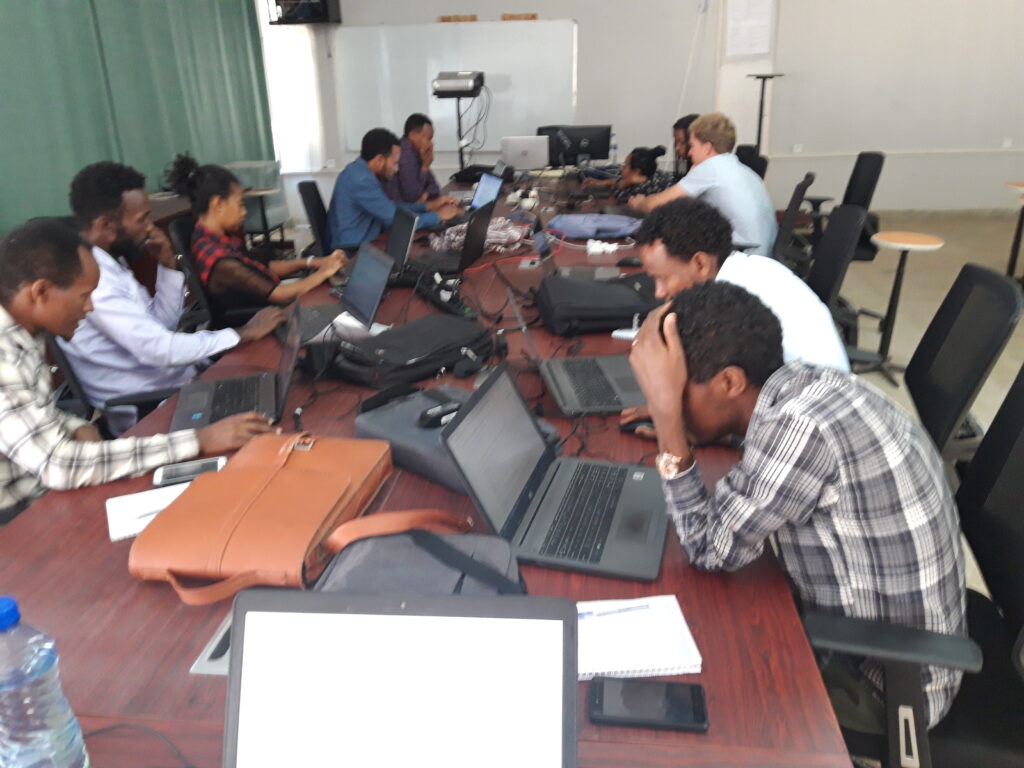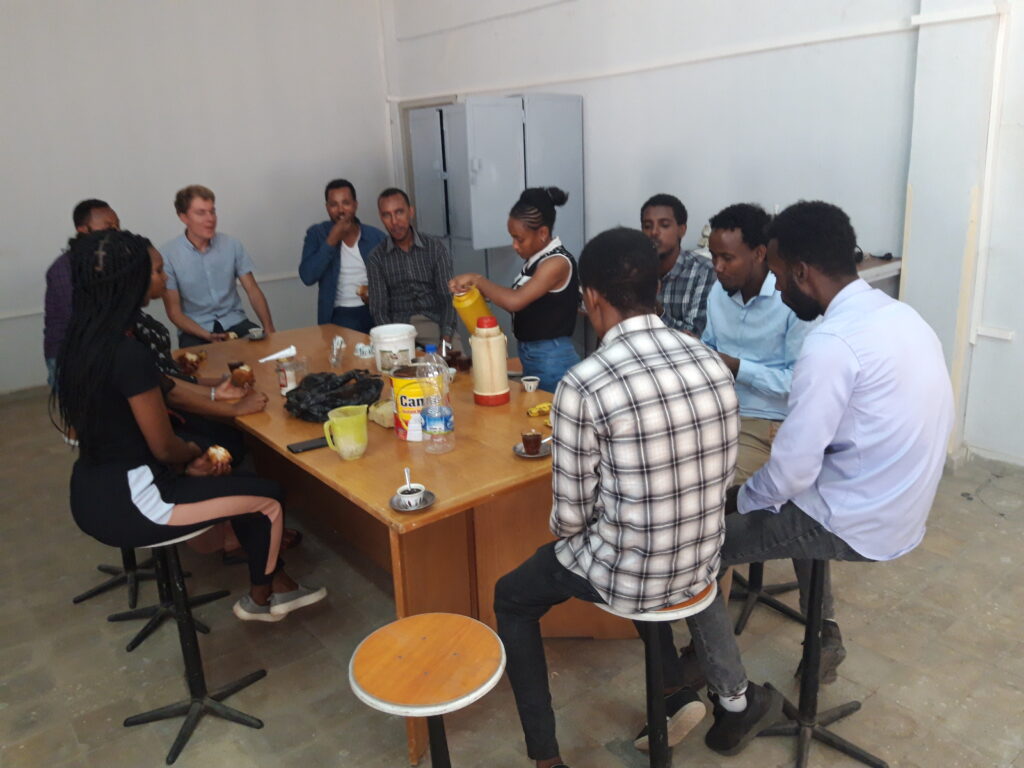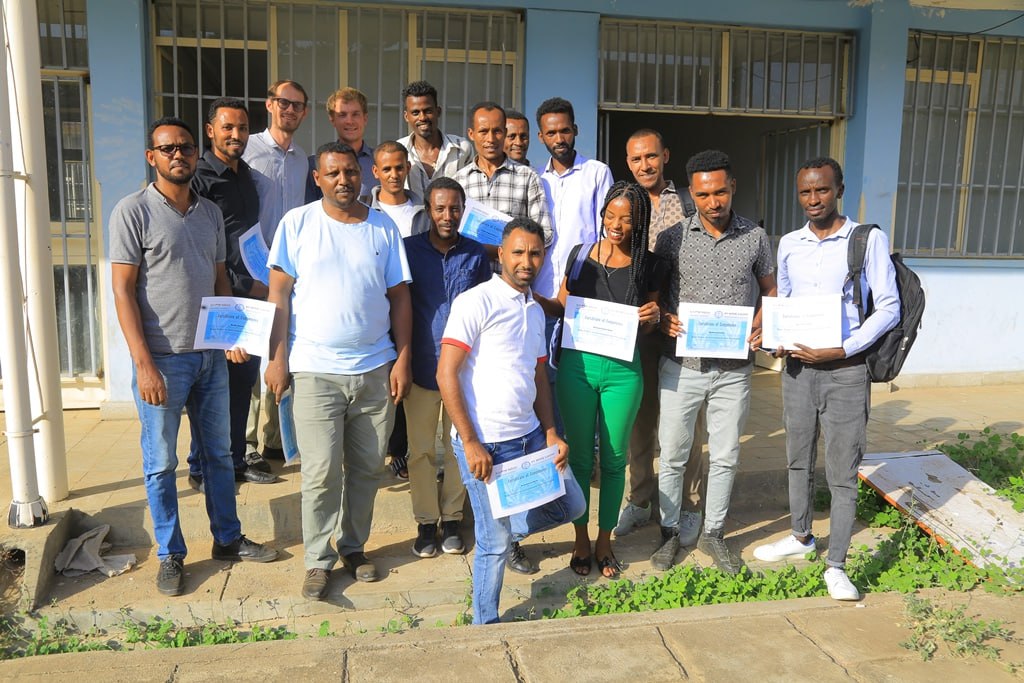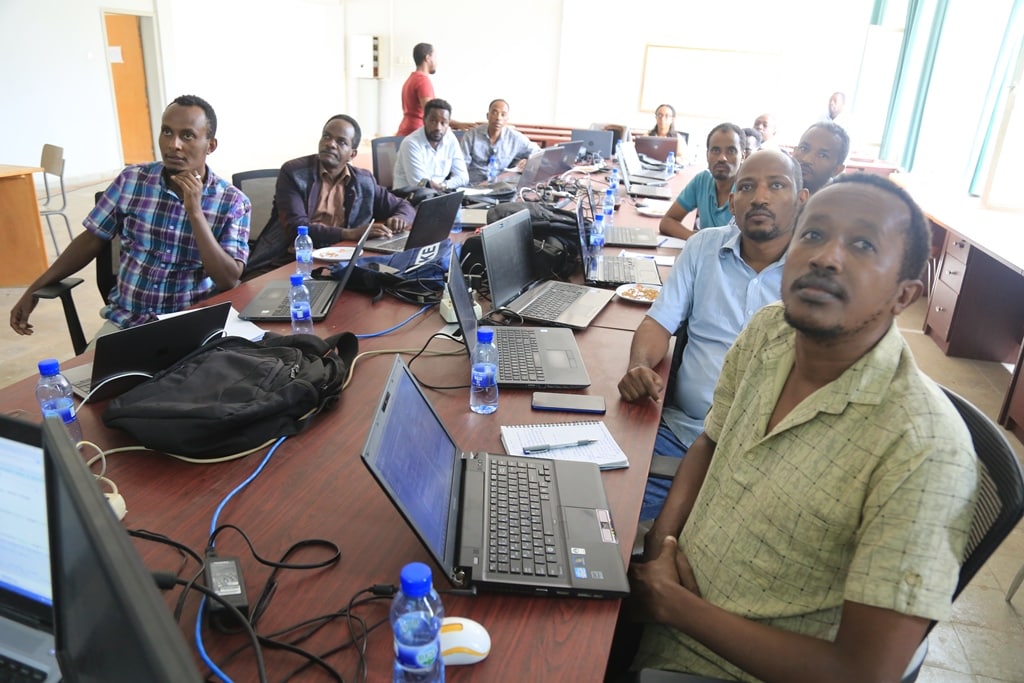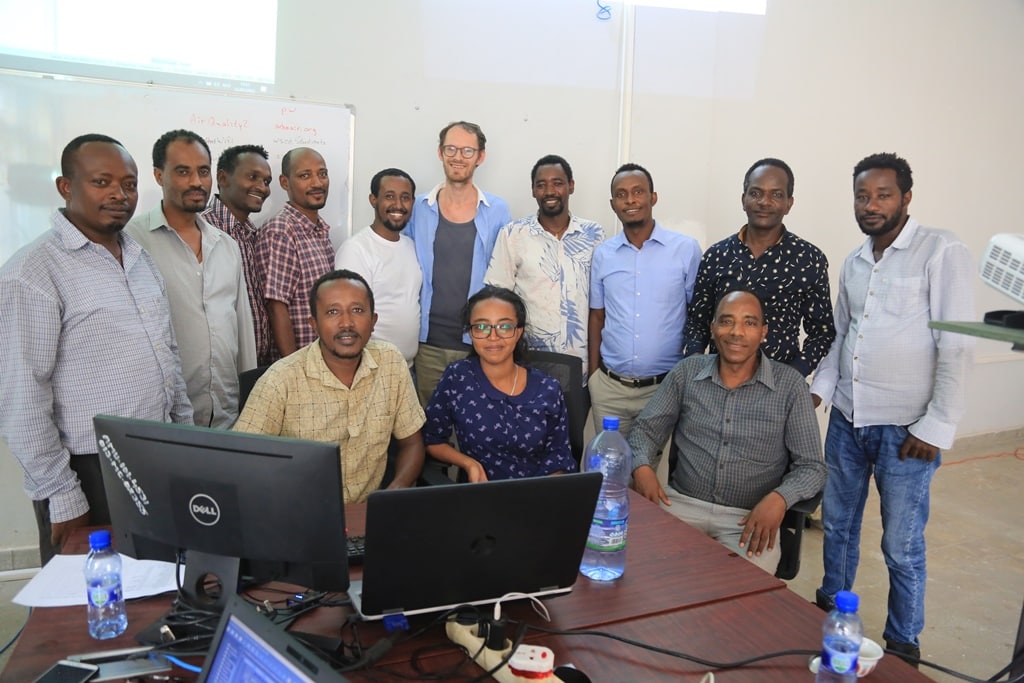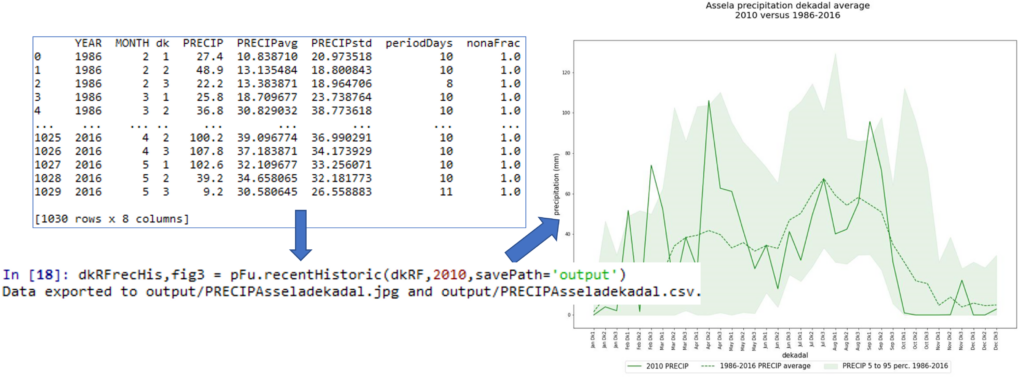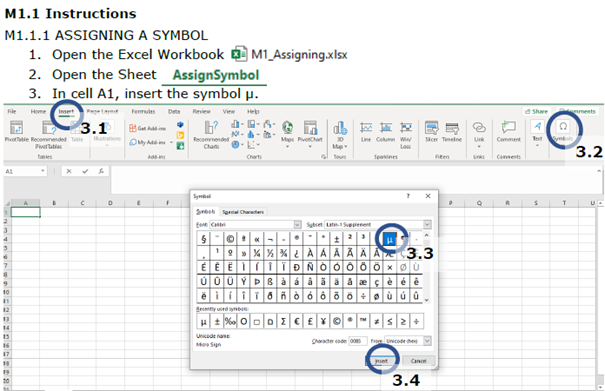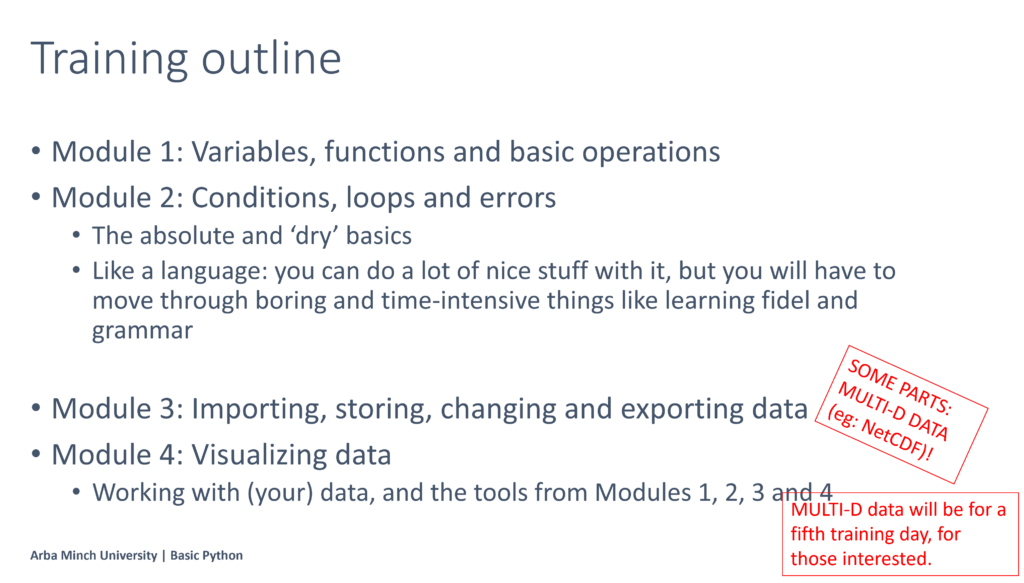Some months ago, we launched the awtiCode core team. Now, awtiCode has offered its first Python training: Basic Python for Environmental Dataprocessing. In previous years I gave Python trainings to colleagues of the Arba Minch Water Technology Institute (AWTI). I am very happy that from these trainings and the launch of awtiCode, through awtiCode colleagues have now stood up to offer the training by themselves. The training was fully offered by Awel Haji, Bahafta Gebresilassie, Beyene Senedu, Demiso Daba and Israel Gebresilasie.
Approximately twenty participants followed the training, divided over two separate groups. The training focused on the use of Python for Environmental Data Processing. It moved from the very basics (variables, collections, functions) to applied topics (satellite data, visualizing data on a map). In total, the training took five weeks of two full mornings per week. Training materials were earlier created by Nimrod de Wit, and slightly revised by the trainers. You can find all training materials on my GitHub repository.







